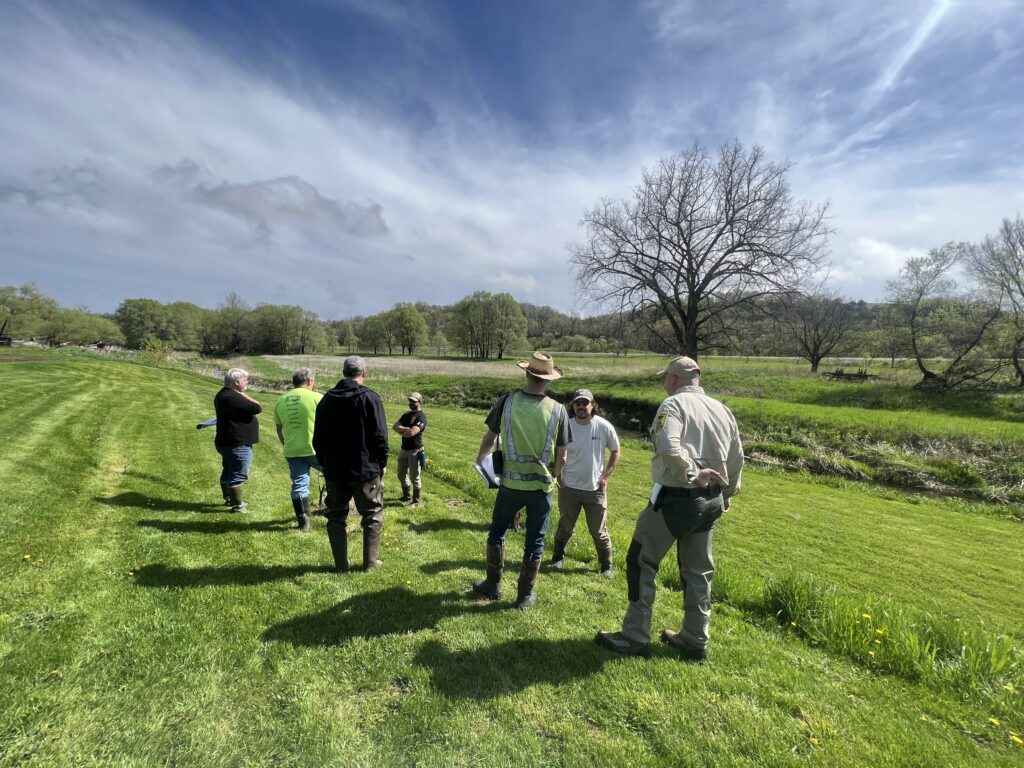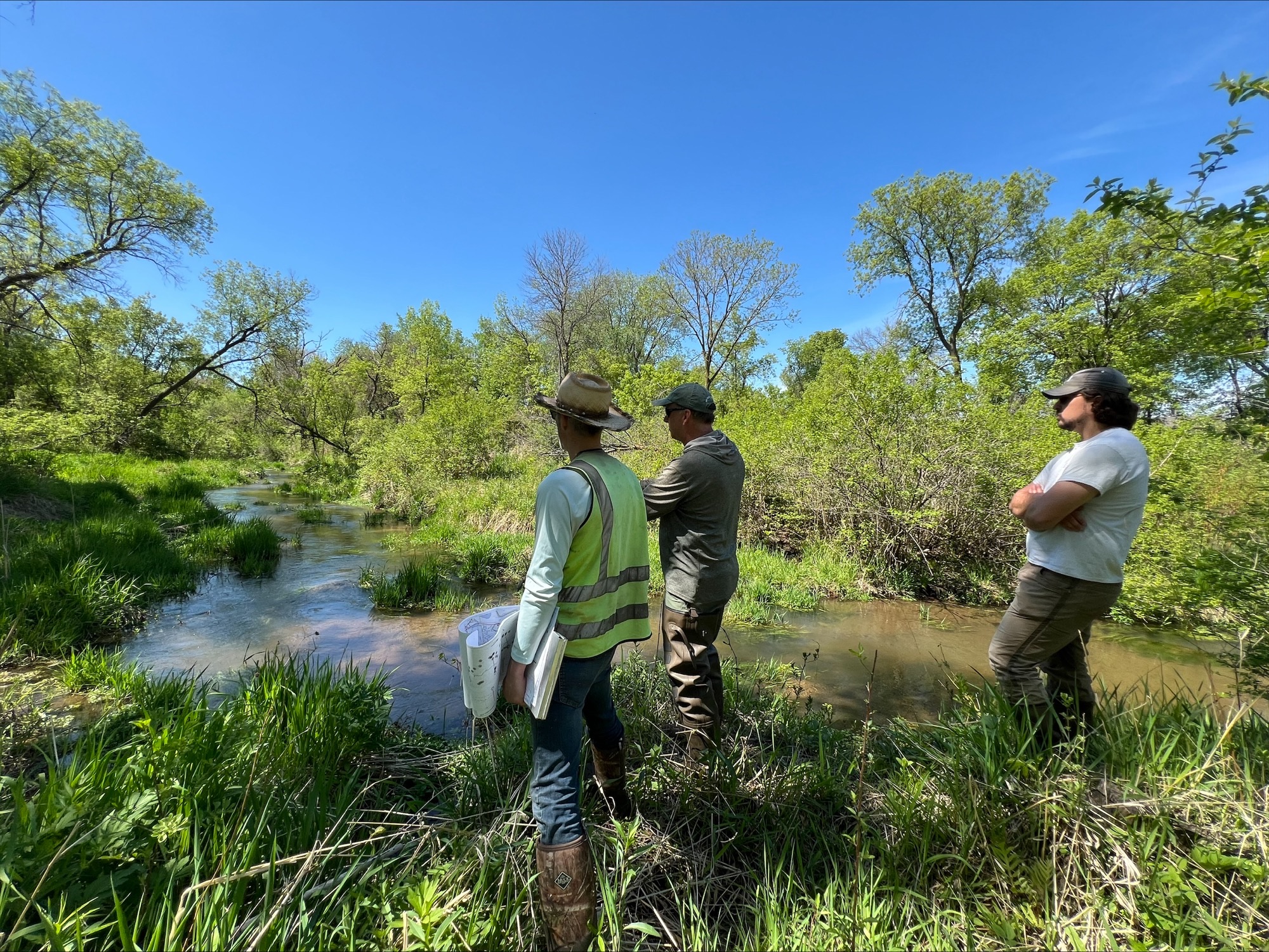A peek inside the process: Designing a trout stream improvement project
by Dr. Jennifer Biederman
Stream restoration projects are essential for the rehabilitation of freshwater ecosystems, particularly for species such as trout, which are sensitive to environmental changes. Designing an effective trout stream restoration project involves a blend of ecological science, hydrological understanding, and community engagement. MNTU stream projects not only aim to restore the natural habitat and water quality necessary for the trout survival but also boost the overall biodiversity and ecological resilience of the stream.
The process for restoring a stream is a long one with many steps along the way. One of the most important stages of a stream project is the design process. Once MNTU secures funding for a project, MNTU uses a competitive bidding process to hire an environmental engineering firm to design the stream improvement project. The firm’s team, which involves a licensed engineer and staff with expertise in environmental conservation, works with MNTU staff and the Minnesota DNR, to develop a blueprint for the project that meets the goals and objectives identified to improve habitat and the ecological and hydrological integrity of the stream – for fish, wildlife, and anglers alike.

Design walks are a key step in the process. What is a design walk? A design walk is a “meeting of the minds” in which partners involved in the stream improvement project – engineering team, MNTU staff, MNDNR – slowly walk the stream with geomorphological survey data in hand and discuss best approaches based on the site. The collective expertise on the ground, analyzing the condition, challenges, and goals of the pending project – is a key to share, learn, and develop a shared, informed plan for the restoration. Typically, there are 3-4 design walks to revise drafts of the design. When the final design is complete, it is sent to DNR Hydrologist for review and permitting.

